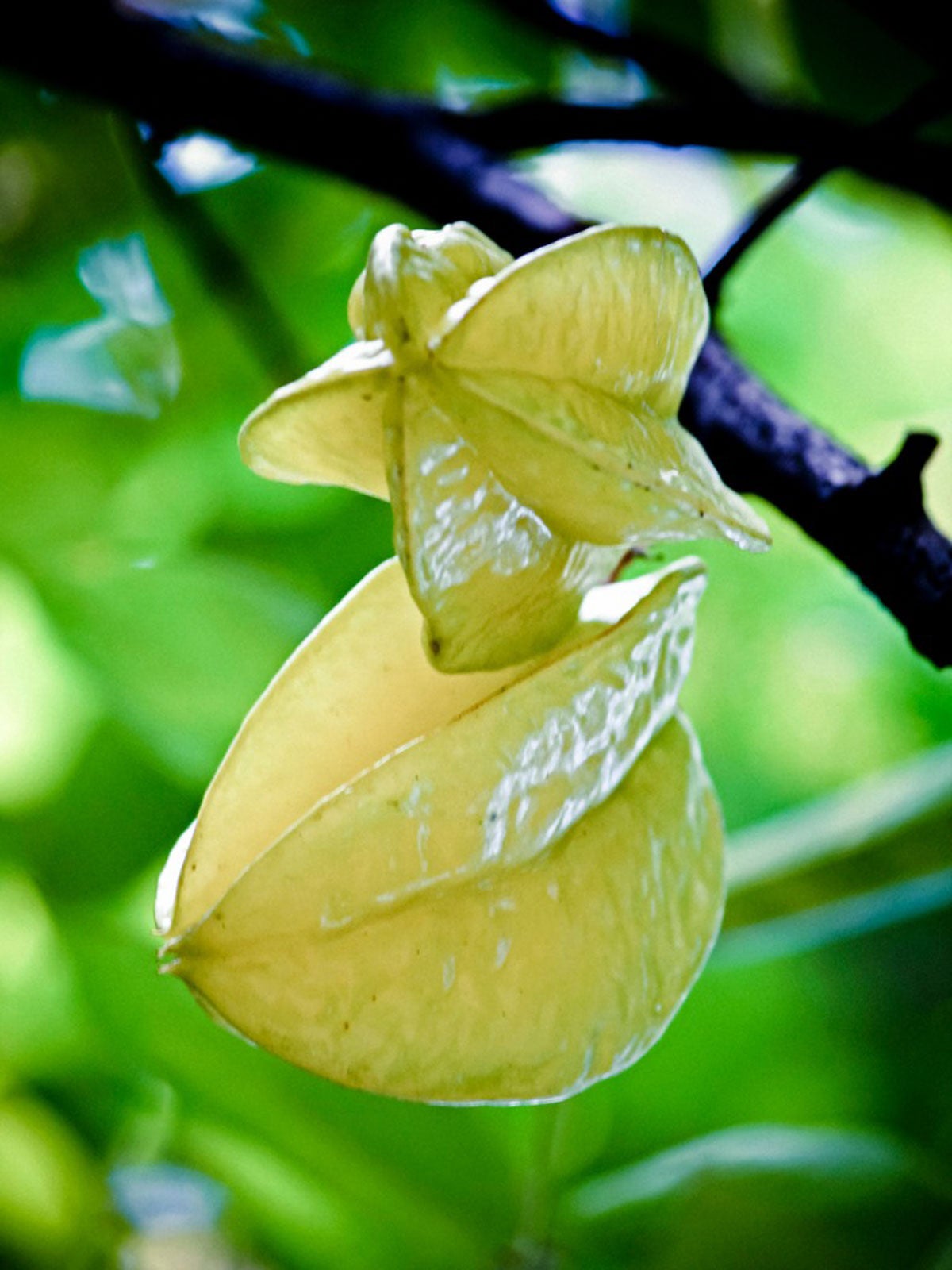
If you want to grow an exotic fruit tree, try growing Carambola starfruit trees. Carambola fruit is a sweet, yet acidic, fruit native to Southeast Asia. It is also called starfruit due to the shape of the fruit because when sliced it reveals a perfect five-point star.
Interested in starfruit tree growing? Read on to learn how to plant a starfruit tree and about starfruit tree care.
About Carambola Starfruit Trees
Carambola starfruit trees are subtropical and in ideal conditions can reach a height of about 25-30 feet (7.5-9 m.) and 20-25 feet (6-7.5 m.) across.
The tree is an evergreen in warmer climates but will lose its leaves when temperatures drop below 27 F. (-3 C.) for a length of time. In the United States, starfruit can be grown in USDA zones 9-11. Outside of this, you’ll have to grow starfruit trees in containers to bring indoors over winter.
The leaves of the starfruit tree are arranged in a spiral pattern. They are soft, medium green, and smooth on the top with a mildly hairy underside. They are light-sensitive and fold at night or when the tree is disrupted. Clusters of pink to lavender blooms occur several times a year and give way to the waxy, yellow-skinned fruit.
How to Plant a Starfruit Tree
In the tropics, starfruit trees can be planted year-round but in colder regions, plant Carambola in the summer.
These trees are propagated via seed or by grafting. That said, seed from this particular fruit is only viable for a short period of time, mere days at most, so use the freshest seeds available to increase the chances of germination. You can also try starfruit growing by grafting. Take graft wood from mature twigs that have leaves and if possible, buds. Healthy one-year-old seedlings should be used for rootstocks.
Sign up for the Gardening Know How newsletter today and receive a free copy of our e-book "How to Grow Delicious Tomatoes".
Carambola trees love hot temperatures and do best when temps are between 68-95 F. (20 -35 C.). Choose a sunny area, preferably with a rich, loamy soil that is moderately acidic with a pH of 5.5 to 6.5. in order to try starfruit tree growing.
Starfruit Tree Care
Starfruit trees should be planted in full sun and provided with regular irrigation throughout the year. Be careful, though, as starfruit trees are sensitive to over-watering.
If your soil is low in fertility, fertilize the trees with a light application every 60-90 days until they have been established. Thereafter, fertilize once or twice a year with a food that contains 6-8% nitrogen, 2-4 % phosphoric acid, 6-8% potash, and 3-4 % magnesium.
Trees are prone to chlorosis in some soils. To treat chlorotic trees, apply a foliar application of chelated iron and other micronutrients.
Remember when growing starfruit, the trees are subtropical and need protection from cold temperatures. If you experience cold temperatures, be sure to cover the trees.
The trees rarely need to be pruned. They also have few disease issues but are susceptible to fruit flies, fruit moths, and fruit spotting bugs in regions where these pests are a problem.

Amy Grant has been gardening for 30 years and writing for 15. A professional chef and caterer, Amy's area of expertise is culinary gardening.
